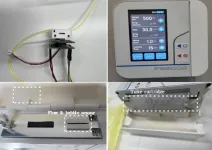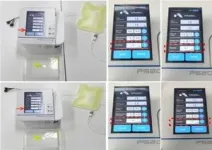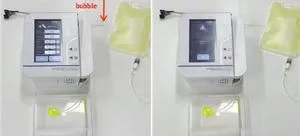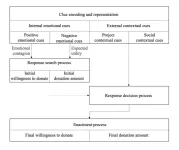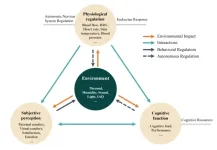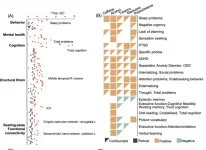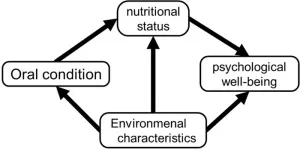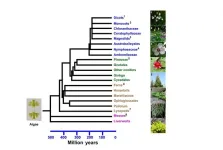(Press-News.org) Excessive administration of analgesic drugs frequently results in medical accidents. To prevent the occurrence of these accidents, a drug infusion pump featuring a technology for safely detecting medication administration has been developed for the first time in the world.
The research team led by Senior Researcher Dong-kyu Lee of the Korea Institute of Machinery and Materials (President Seog-hyun Ryu, hereinafter referred to as KIMM), an institute under the jurisdiction of the Ministry of Science and ICT, has succeeded in developing the technology for customized sensor modules capable of measuring the extremely low flow rate of analgesic drug infusion pumps as well as the existence of bubbles in these pumps. A safe drug infusion pump system equipped with this sensor module is currently being developed for mass production by Unimedics (Representative Director Joo-seok Yang), one of Korea’s most renowned manufacturers of medication injectors.
Meanwhile, this technology was selected as the “2023 Outstanding Research Achievements by Government-funded Research Institutions(Nov, 29, 2023)” in recognition of the research achievements related thereto, including publication in an SCI journal*, filing of multiple patent applications (four (4) in Korea, one (1) in the United States), and technology transfers.
*Title of publication: “Sensitive and reliable thermal micro-flow sensor for a drug infusion” (Sensors and Actuators A: physical, date of publication: April 27, 2020)
While narcotic analgesics are administered for post-operative pain management at an extremely low flow rate of 1 to 2 mL/h, the KIMM developed a new thermal micro-flow sensor using a micro-heater and multiple temperature sensors in order to accurately measure such low flow rates. The research team succeeded in measuring the extremely low flow rates by combining the cooling effect of the microheater caused by heat loss with the heating effect that the microheater has on the fluid.
Additionally, in line with the revised regulations of the FDA that now require bubble sensors to be included in drug infusion pumps, the newly developed infusion pumps are equipped with temperature sensors at both ends of the assembled tube, and these sensors are capable of detecting bubbles by using the difference in heat diffusion depending on the air or liquid inside the tube. In particular, by attaching the sensor to the drug injection tube, the flow rate and bubbles can be measured non-intrusively on the outer surface of the tube. By allowing for the reuse of sensors, this can help to resolve the issues associated with the limited medical fees for medical disposables.
By using this technology, the research team of the KIMM secured performance equivalent to that of expensive MEMS sensors in terms of measurement sensitivity, accuracy, range, and bubble detection. The sensor has been developed as a customized module so that the ultrasonic bubble sensor within the drug infusion pump can be replaced. This sensor module is now being developed for mass production by being applied to new drug infusion pumps.
The conventional technology for measuring the number of drops falling into the drip chamber could not be used for analgesic drug infusion pumps that do not have drip chambers, and was relatively inaccurate (±10%) and not easily usable at low flow rates. While thermal micro-flow sensors have been developed by global companies, these sensors are mainly manufactured using expensive semiconductor processes. Additionally, there also is the economic issue associated with the fact that these sensors are all disposable due to contact between drug liquid and the sensor.
Therefore, an indirect flow rate measurement method involving the rotation of motors is currently being used for analgesic infusion pumps, and no device has yet been equipped with a real-time flow rate measurement technology.
The new technology developed by the KIMM is expected to help to prevent medical accidents resulting from excessive post-surgery administration of analgesics, which usually results from the malfunctioning of drug infusion pumps or deviations of medical consumables. It is also anticipated to enable the provision of prompt medical services by transmitting accurate information such as the data on the medication speed and dosage, and also reduce the workload of the medical staff related to drug injection management.
Senior Researcher Dong-kyu Lee of the KIMM was quoted as saying, “This is a technology for a sensor capable of simultaneously measuring extremely low flow rates and bubbles without coming into contact with the drug outside the tube and without having to apply the expensive MEMS sensor technology, simply by attaching the drug infusion tube to the sensor. It is a technology that is customized for the injection of medications.” He added, “We will make our best efforts to prevent medical accidents where overdosages of analgesics result in death during surgery or cause deaths of cancer patients, and also strive for research and development to ensure the safety of medical treatments involving drug injections and protect the safety of the public.”
Meanwhile, this research has been conducted with the support of the project for the “development of next-generation precise and safe analgesic injection pumps and an integrated system for drug injection management based on drug injection speed monitoring” of the Ministry of Science and ICT and the Innopolis Daedeok Development Project, and has been joined by the KIMM and Unimedics.
###
The Korea Institute of Machinery and Materials (KIMM) is a non-profit government-funded research institute under the Ministry of Science and ICT. Since its foundation in 1976, KIMM is contributing to economic growth of the nation by performing R&D on key technologies in machinery and materials, conducting reliability test evaluation, and commercializing the developed products and technologies.
This research has been conducted with the support of the project for the “development of next-generation precise and safe analgesic injection pumps and an integrated system for drug injection management based on drug injection speed monitoring” of the Ministry of Science and ICT and the Innopolis Daedeok Development Project, and has been joined by the KIMM and Unimedics.
END
KIMM develops technology for detecting injection of medication to prevent medical accidents related to analgesic drug infusion pump in hospitals
KIMM develops technology for a sensor to measure low flow rate and bubbles during drug infusion. Mass production of the world's first safe electric drug infusion pump equipped with a flow sensor is in progress
2024-01-30
ELSE PRESS RELEASES FROM THIS DATE:
Machine sentience and you: what happens when machine learning goes too far
2024-01-30
There’s always some truth in fiction, and now is about the time to get a step ahead of sci-fi dystopias and determine what the risk in machine sentience can be for humans.
Although people have long pondered the future of intelligent machinery, such questions have become all the more pressing with the rise of artificial intelligence (AI) and machine learningT. These machines resemble human interactions: they can help problem solve, create content, and even carry on conversations. For fans ...
Drexel researchers propose AI-guided system for robotic inspection of buildings, roads and bridges
2024-01-30
Our built environment is aging and failing faster than we can maintain it. Recent building collapses and structural failures of roads and bridges are indicators of a problem that’s likely to get worse, according to experts, because it’s just not possible to inspect every crack, creak and crumble to parse dangerous signs of failure from normal wear and tear. In hopes of playing catch-up, researchers in Drexel University’s College of Engineering are trying to give robotic assistants the tools to help inspectors with the job.
Augmenting visual ...
Residents of rural ‘glades’ take a ‘leap of faith’ to combat dementia
2024-01-30
The prevalence of Alzheimer’s disease and related dementias (ADRD) is disproportionately high among rural, racially/ethnically diverse older residents. In fact, they face up to an 80 percent greater risk of cognitive impairment in older age, and 2.5 times potentially preventable ADRD-related hospitalizations compared to urban dwellers. It is estimated that early and accurate diagnosis in the mild cognitive impairment stage could save up to $7 trillion in patients’ health and long-term care costs by 2050.
To address these health disparities in rural underserved populations, researchers from Florida ...
Emotions drive donation behavior in disease relief projects on a fundraising platform
2024-01-30
The digital age has profoundly changed how we communicate as humans. Today, we can regularly interact with people we are unrelated to and unacquainted with in real time across the world. Because of this, individuals can now engage in prosocial behaviors, including cooperating, sympathizing, helping and donating, with complete strangers, but the motivating factors behind these behaviors are poorly understood. Analysis of data generated from a fundraising website suggests that positive emotions elicit higher total donation amounts while negative emotions result in higher individual donation amounts.
Fundraising ...
Comfort isn’t only a feeling, it’s a study
2024-01-30
A lot of factors go into an individual’s comfort, and it’s more than just how one feels about the temperature
The thermal environment refers to the physical surroundings as it pertains to the heat exchange of an individual and its environment. Naturally, the thermal environment also relates to comfort, or more specifically, thermal comfort. This type of comfort is an important metric to measure an individual’s feelings as it relates to their environment and can be directly associated with health, efficiency, comfort, and energy consumption. ...
After 7 years, alcohol control program still reduces child abuse
2024-01-30
COLUMBUS, Ohio – A neighborhood alcohol control project in Sacramento that reduced cases of child abuse and neglect soon after implementation still had a positive impact seven years later, a new study found.
Results showed that, in one of the neighborhoods where the program was put into place, total entries into foster care were reduced by 11.8% and alcohol-related foster care entries were reduced by 11.2% a full seven years after implementation.
These new results were not as strong as those found right after the project was implemented, and there are other caveats to the success of the program. But the results are still very encouraging, said Bridget Freisthler, ...
Prenatal substance exposure and childhood mental health
2024-01-30
An observational study found links between prenatal substance exposure and mental health in children 10–12, but also found that controlling for environment and genetics eliminated many associations. Qiang Luo and colleagues analyzed longitudinal data from almost 10,000 participants in the Adolescent Brain Cognitive Development cohort, looking for associations of maternal self-report of prenatal exposure to caffeine, alcohol, tobacco, and marijuana with mental health outcomes from age 10 to 12. Although the authors found many associations between prenatal exposure to the ...
Gene-based therapy may slow development of life-threatening heart condition
2024-01-30
A new study in mice shows that replacement of a dysfunctional gene could prolong survival in some people with arrhythmogenic right ventricular cardiomyopathy (ARVC), a rare inherited disorder in which the muscular walls of the heart progressively weaken and put patients at risk of dangerous irregular heartbeats.
The investigational treatment targets the loss of function of a gene implicated in many cases of ARVC, plakophilin-2 (PKP2). The PKP2 gene provides instructions for making a protein that holds heart tissues together. When the gene — one of several thought to contribute to the disease —is defective ...
Oral health indirectly influences subjective psychological well-being in older adults
2024-01-30
In humans, oral health influences general health and well-being in many ways. Other than reducing the need for oral rehabilitation later in life, maintaining good oral health reduces the risk of several systemic diseases. Therefore, investing time and effort into improving oral health can be highly beneficial for older adults. However, whether the health benefits of improved oral health extend to psychological domains remains unclear.
Positive psychological well-being is known to positively affect the survival rates of both healthy and unhealthy populations. Thus, to increase life expectancy, it is important to identify the factors associated with ...
Asparagus and orchids are more similar than you think
2024-01-30
What does an asparagus have in common with a vanilla orchid? Not much, if you are just looking at the two plants’ appearances. However, when you look inside - their leaves are more similar than you would think – as revealed by the composition of their cell walls.
By studying plant cell walls – which are to plants what skeletons are to humans – we can reveal the composition of how leaves and stems of plants are actually constructed. This is exactly what a team of University of Copenhagen researchers has done, in a large comprehensive study. In doing so, they have created something truly novel: a large "reference catalogue" ...
LAST 30 PRESS RELEASES:
How do health care professionals determine eligibility for MAiD?
Microplastics detected in rural woodland
JULAC and Taylor & Francis sign open access agreement to boost the impact of Hong Kong research
Protecting older male athletes’ heart health
KAIST proposes AI-driven strategy to solve long-standing mystery of gene function
Eye for trouble: Automated counting for chromosome issues under the microscope
The vast majority of US rivers lack any protections from human activities, new research finds
Ultrasound-responsive in situ antigen "nanocatchers" open a new paradigm for personalized tumor immunotherapy
Environmental “superbugs” in our rivers and soils: new one health review warns of growing antimicrobial resistance crisis
Triple threat in greenhouse farming: how heavy metals, microplastics, and antibiotic resistance genes unite to challenge sustainable food production
Earthworms turn manure into a powerful tool against antibiotic resistance
AI turns water into an early warning network for hidden biological pollutants
Hidden hotspots on “green” plastics: biodegradable and conventional plastics shape very different antibiotic resistance risks in river microbiomes
Engineered biochar enzyme system clears toxic phenolic acids and restores pepper seed germination in continuous cropping soils
Retail therapy fail? Online shopping linked to stress, says study
How well-meaning allies can increase stress for marginalized people
Commercially viable biomanufacturing: designer yeast turns sugar into lucrative chemical 3-HP
Control valve discovered in gut’s plumbing system
George Mason University leads phase 2 clinical trial for pill to help maintain weight loss after GLP-1s
Hop to it: research from Shedd Aquarium tracks conch movement to set new conservation guidance
Weight loss drugs and bariatric surgery improve the body’s fat ‘balance:’ study
The Age of Fishes began with mass death
TB harnesses part of immune defense system to cause infection
Important new source of oxidation in the atmosphere found
A tug-of-war explains a decades-old question about how bacteria swim
Strengthened immune defense against cancer
Engineering the development of the pancreas
The Journal of Nuclear Medicine ahead-of-print tip sheet: Jan. 9, 2026
Mount Sinai researchers help create largest immune cell atlas of bone marrow in multiple myeloma patients
Why it is so hard to get started on an unpleasant task: Scientists identify a “motivation brake”
[Press-News.org] KIMM develops technology for detecting injection of medication to prevent medical accidents related to analgesic drug infusion pump in hospitalsKIMM develops technology for a sensor to measure low flow rate and bubbles during drug infusion. Mass production of the world's first safe electric drug infusion pump equipped with a flow sensor is in progress
